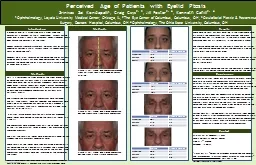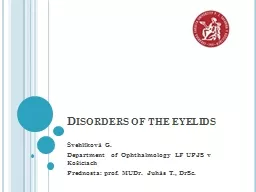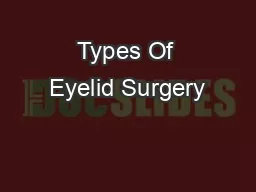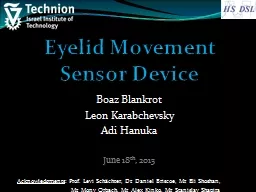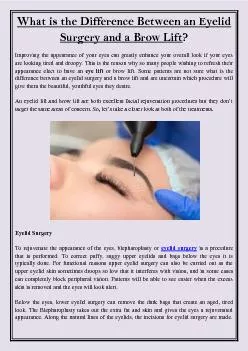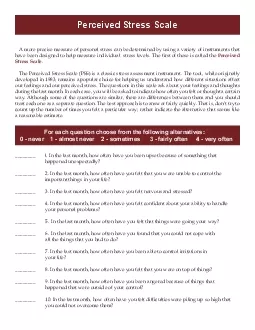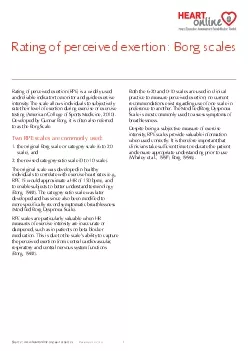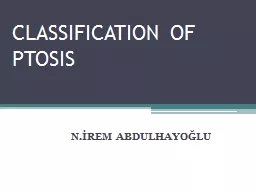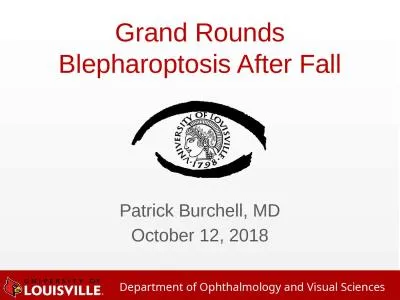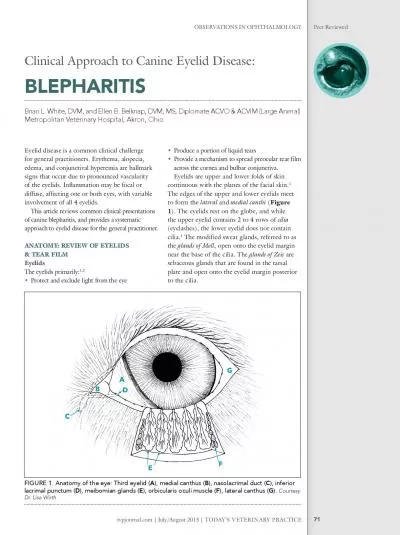PPT-Perceived Age of Patients with Eyelid Ptosis
Author : mitsue-stanley | Published Date : 2017-05-12
A drooping eyelid is associated with a tired aged and cosmetically unappealing facial appearance Patients pursue upper eyelid ptosis repair for functional benefit
Presentation Embed Code
Download Presentation
Download Presentation The PPT/PDF document "Perceived Age of Patients with Eyelid Pt..." is the property of its rightful owner. Permission is granted to download and print the materials on this website for personal, non-commercial use only, and to display it on your personal computer provided you do not modify the materials and that you retain all copyright notices contained in the materials. By downloading content from our website, you accept the terms of this agreement.
Perceived Age of Patients with Eyelid Ptosis: Transcript
Download Rules Of Document
"Perceived Age of Patients with Eyelid Ptosis"The content belongs to its owner. You may download and print it for personal use, without modification, and keep all copyright notices. By downloading, you agree to these terms.
Related Documents

